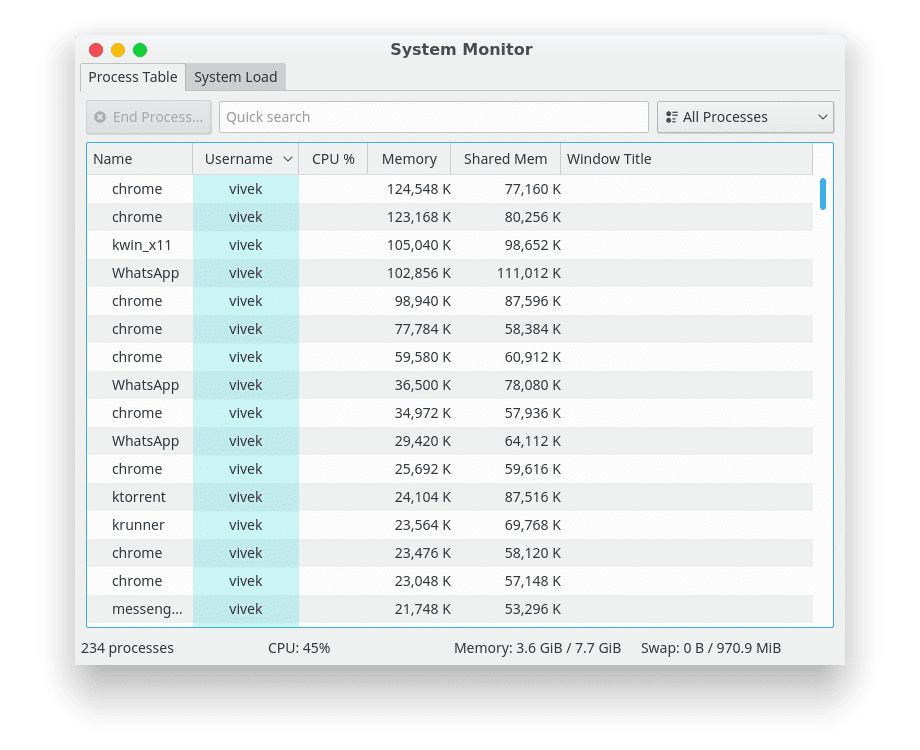KDE Plasma is one of the best and most customizable desktop environments available. This is made possible due to KDE Plasma being a modular desktop. Everything from the panel to the icons can be fine-tuned to your liking. It also supports themes and icon packs like most other desktop environments. All of this comes at a cost though. The Plasma desktop is by no means lightweight and can be quite a task for an older PC to handle. Even if you have a fairly powerful PC, the KDE Plasma desktop might seem a little slow. Fortunately, it’s easy to restart the KDE Plasma desktop without rebooting your computer.
Why should you restart KDE Plasma Shell?
You won’t need to do this often, I’ve barely faced this once and I’ve been using KDE for a couple of months. This could happen if you’ve been using KDE on a machine that stays on for long periods. Rebooting solves the issue, but this isn’t an issue with the entire operating system. The issue lies with the Plasma desktop and thus restarting it fixes the sluggishness too. Rebooting isn’t very difficult, it is but it takes time. You can still have all your current work open and running when KDE Plasma boots up after a restart.
We have covered a couple of ways to restart the Plasma Shell in KDE5 below.
Restart KDE Plasma 4
To do this with the Plasma 4 desktop, launch the Terminal window. This is known as Konsole in KDE. Copy and paste the following two commands in the Konsole one by one and hit enter after each.
killall plasma-desktop kstart plasma-desktop
The killall command kills the desktop while kstart, as you can guess, starts it again.
Restart KDE Plasma 5
On Plasma 5, you can use either the killall command as was the case with the previous KDE versions, or kquitapp5. the command to start the desktop is still the same but the name of the process is a little different.
killall plasmashell kstart plasmashell
Here’s how you can do this using the kquitapp5 command:
kquitapp5 plasmashell kstart5 plasmashell
What do these commands mean?
If you’re using Linux, you’re probably enjoying the learning experience. It’s great to learn things. Before using the commands, let’s see what the commands do. Here’s what they do.
- killall – This command kills all of the processes associated with the name of the process you give it. For instance, if you have 5 instances of Chrome running simultaneously you can use
killall chrome. This will call all the running instances of the Chrome process and kill them. To start the process, use thekstartcommand.
- kquitapp5 – This command takes the name of the application you want to stop. The Plasma desktop is run by an application named
plasmashell. So you can usekquitapp5to stop the application itself, thus killing the desktop out of your system’s memory. You can use thekquitapp5 -hcommand in a terminal to learn more about it.
- kstart – the
kstartcommand is used to launch applications with special properties. You can specify the location of the app window, the size, or whether it should appear on all desktops or just one, etc. There are several different parameters you can assign. We haven’t done anything like that so why use thekstartcommand? You can also launch apps via the Terminal by simply using their names. For instance, typefirefoxin a terminal and hit enter. This will launch Firefox if you have it installed. Now close the Terminal but not the Firefox. You’ll notice Firefox closes automatically since it was running on the Terminal as a dependent service.kstartallows you to launch applications as independent services so they won’t close as soon as you close the Terminal.
So, that was how you can restart the KDE plasma desktop without rebooting your machine. Once the Plasma shell is restarted, you should notice the issue you were having resolved.
